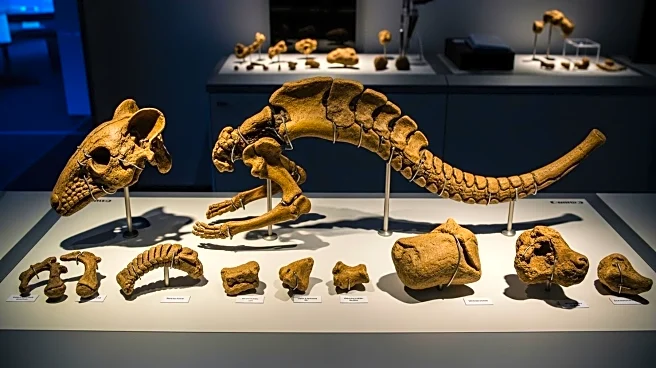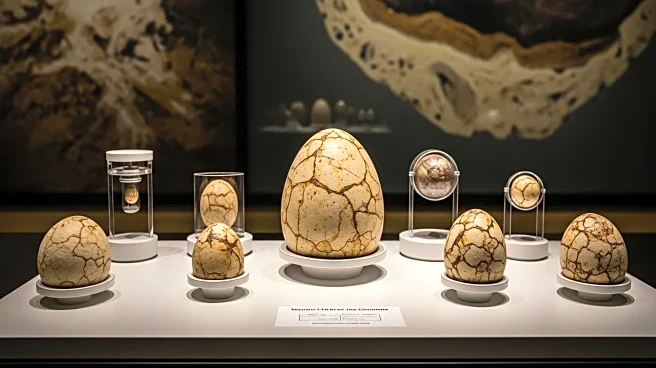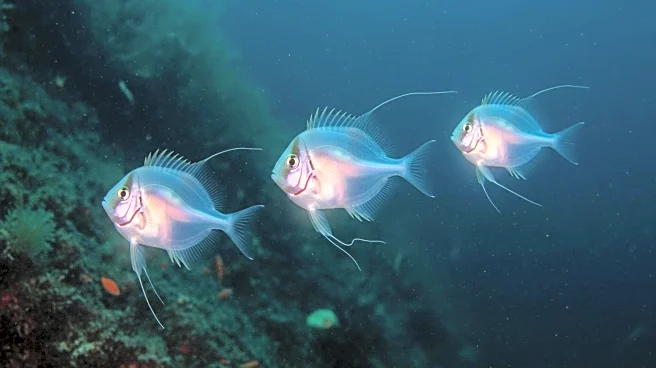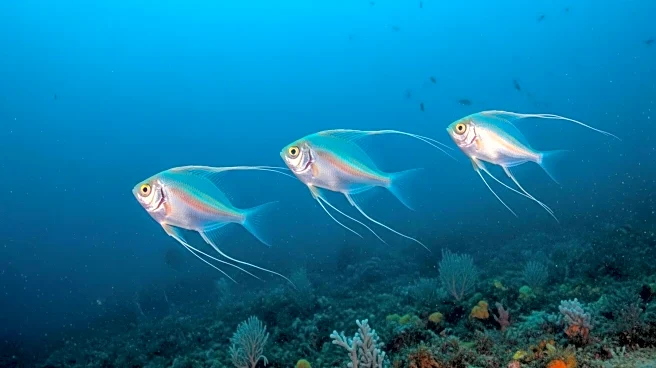What's Happening?
Recent studies have revealed that mastodons, ancient relatives of elephants, exhibited complex migration patterns across North America during the Ice Age. Using ancient DNA analysis, researchers from McMaster University and Harvard have reconstructed the mitochondrial genomes of several mastodon specimens, uncovering significant genetic diversity and evidence of repeated migrations. These migrations were driven by climate fluctuations, with mastodons moving vast distances in response to warming and cooling periods. The study suggests that mastodons were more genetically diverse than previously thought, with distinct genetic groups identified in different regions. The findings challenge previous classifications of mastodon species, indicating potential separate species such as the American and Pacific mastodon.
Why It's Important?
The study provides crucial insights into the evolutionary history and adaptability of mastodons, highlighting the impact of climate change on species migration and diversity. Understanding these patterns can inform current conservation efforts, particularly in the context of climate change and its effects on modern species. The research also contributes to the broader understanding of Ice Age ecosystems and the interactions between different species. By revealing the genetic diversity and migration patterns of mastodons, scientists can better predict how current and future climate changes might affect biodiversity and species distribution.
What's Next?
Further research is needed to explore the interactions between different mastodon species and their responses to climate change. Scientists aim to investigate the potential interbreeding between American and Pacific mastodons and the implications for their genetic diversity. Additionally, the study raises questions about the existence of a distinct Mexican mastodon lineage, which could represent a new species. Continued analysis of mastodon fossils and genetic data will help refine the understanding of their evolutionary history and migration patterns.
Beyond the Headlines
The findings underscore the importance of genetic research in uncovering the complexities of ancient species and their responses to environmental changes. The study also highlights the role of climate change in shaping the distribution and diversity of species, offering lessons for current biodiversity conservation efforts. By examining the past, scientists can better anticipate future challenges and develop strategies to mitigate the impacts of climate change on ecosystems.











